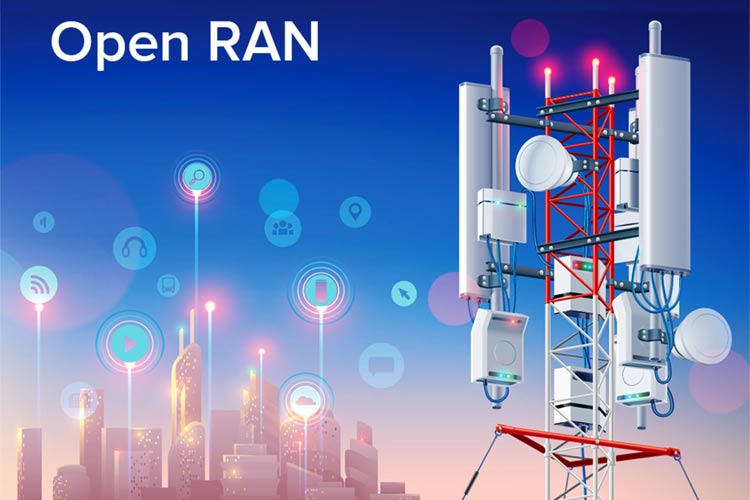
Think about the network efficacies that can be possible if the frequency bands and traffic of radio were supervised or rather managed automatically via artificial intelligence (AI). Then the user experience will never be hampered and 5G coverage could be secured and protected. Experts discovered a unique way of optimizing the radio access networks, which is by including AI in the baseband. In this regard, the Swedish global telecommunications and networking firm Ericsson developed an innovative AI solution that has the benefit to run close to the radios, computing architecture, and reducing the feedback loops to more than ten milliseconds. Experts in the company feel that the algorithms included in the AI have the potential to examine vast volumes of traffic data, and network load seamlessly devoid of impacting the capacity of the network. This ultimately helps traffic predictions immediately in the network, devoid of any requirement of added hardware, and without physical site visits.
Highlighting the advantages of AI in the network, Ulf Rydin, Head of Product Area 4G RAN at Ericsson told media that they are soon coming up with a cutting-edge AI solution so that telecom/service providers can ameliorate their performance in the network constantly and provide a seamless user experience. AI is now pivotal in escalating speeds and speculating traffic flawlessly. Ericsson’s all-new AI solutions have been crafted or rather optimized for radio access network (RAN) computation, and at the same time, taking care of full capacity.
How to Perk-up Performance of RAN with AI
The basic advantages of AI are that it has the potential to assist all the operators to automate the operations of RAN, enhance the performance of the network, and also reduce the time to market for innovative features. In the coming years, experts opine that integration of AI into the existing and upcoming generations of cellular access will be imperative in achieving the mission of crafting a unique cellular network that will have the ability to adapt itself continuously both to the needs of consumers and to the effectual and static characteristics of various scenarios. State-of-the-art 5G services and use cases in different domains or areas such as ultra-reliable low latency communications, massive machine-type communications and sophisticated mobile broadband puts huge demands on the RANs in terms of efficacy, latency, performance, and reliability.
Now, the vast range of network requirements coupled with the increasing volume of control parameters of existing or modern RANs has suddenly uplifted an intricate system for which the vendors are finding it a huge impediment to write operation, maintenance, and fast-control software. It shows that there is a requirement to both ease the provisioning and management of various services, and also perk up the performance of offered services. The point to be noted is that the technical objective of a performance enhancement can be mapped equally to the business objectives of decreasing capital and operating cost respectively, which can then offer lesser cost-per-byte to communication service providers. In this scenario, welcoming or rather adopting the unique AI techniques for designing cellular systems will have the possibility to counter various hindrances both in the context of performance enhancement and simplification. It will then be easier to pull off new-fangled objectives that are far off the jurisdiction of rule-based approaches and classical optimization.

Another point to be noted is that Mobile network operators (MNOs), which are well-known for their potential to operate and craft huge high-performance wireless networks are dependent on specialized radio access and networking equipment coupled with amalgamated proprietary software to provide some imperative cellular services that connect to our tablets, mobile phones, computers, etc. But, limited vendor choice, massive price, and restricted flexibility are preventing MNOs to opt towards more open, standards-based systems, and also software-centric virtual podiums. A lot of MNOs these days are moving towards virtualizing and opening their key networks, thereby attaining notable operational gains. Their sights are now available on the distributed mobile edge networks, which is the radio access network (RAN). The MNOs now have the chance to opt for virtualized and open RAN architectures because they will have to either escalate or draw out the existing RAN equipment to provide 5G services. These are commonly known as ‘Open RAN’.
Now, in spite of various research and examinations, experts feel that full deployment of the open RAN market is still in the nascent stage. According to an estimation by Deloitte Insights, there are now only 35 open RAN deployments throughout the world and most of them entail MNOs testing open RAN in emerging, greenfield, and rural markets. In fact, it was speculated by Deloitte researchers that by the end of 2021, these deployments could be doubled, but for any technology to get fully developed it takes a minimum of three to five years. Competitive and financial bodies are also intersecting to spearhead the market ahead. If this trend evolves continuously, then the open RAN market will have the probability to augment significantly to double-digit growth, which will be around 10 percent towards the end of 2025 compared to one percent today. Researchers also suggested that if the government helps MNOs to restore or replace the already installed 5G RAN equipment from restricted vendors, then the growth will be much more than expected.
Benefits of AI-driven RAN and Deployment
In a cellular network, the RAN is a very important part as it helps in monitoring a Communications Service Provider's (CSP’s) most imperative asset, that is the network. In spite of spending millions of dollars in the spectrum, CSPs have a very diminutive control over their spectrum holdings utilizing the current RAN controller technologies. This old situation is now getting changed with the unleashing of the much-anticipated AI-driven RAN intelligence solutions.
Nowadays, the mobile networks are turning out to be extremely intricate with the commencement of 5G and even though several efforts have been undertaken to shutting down 3G and 2G networks, a vast number of CSPs will require to operate several bast station types across 5G, 3G, 4G, and 2G. Furthermore, they will be required to accommodate a huge range of the spectrum, which is around 20 bands. For instance, it will range from sub-1GHz low-bands and 3.5GHz mid-bands to very high 26-40GHz millimeter bands, with even higher 66GHz bands and in the coming years, more bands are speculated to be used. Moreover, CSPs will face another obstacle of accommodating a wide-ranging network architecture, which comprises both the new-fangled disaggregated edge and RAN architecture and also the conventional distributed architecture.
Amid these challenges, they will be providing a wide bundle of services like WBB, AR/VR, FWA, IoT, and LTE-V, each will be requiring specific technology, while at the same time, countering the ongoing diversified RF parameters, channel interference, and different sights of signal attenuation. The conventional optimization of RAN networks is mostly based on the utilization of in-house experts who monitor all the network faults and alarms. The procedure becomes complex and costly as it is mostly workforce-intensive where all the analysis and collection of data is done by laborers and therefore, it needs a huge Operations and Management (O&M) line-up. The problem is that most of the CSPs only have a small number of resources at their end and therefore, only the selected ‘top N’ cells in the entire network are hand-picked for optimization, which ultimately entails several months and weeks to adjust network parameters to support new applications.
With the help of optimizing the network hyperparameters, RAN algorithms (L1/L2 and L3 algorithms) are adapted to new-fangled network conditions and scenarios. This helps in uplifting the performance of a specific part of a network like a particular cluster of cells into a balanced condition thereby enhancing the specific key performance indicators (KPIs).
According to an exclusive report of Counterpoint Research, the Chinese international technology firm Huawei is nurturing or rather developing the utilization of intelligent networks, and of late, it unleashed a new set of RAN intelligence solutions, which includes:
- SingleBAND – enables site-level, multi-band convergence through on-site intelligence. This solution enables flexible full-band decoupling, which through FDD enhanced uplink extends TDD band coverage while also improving network capacity through full-band and multi-beam 3D coordination.
- Capacity Turbo – a network-level solution that takes the multi-band convergence concept beyond a single site. Capacity Turbo improves optimization efficiency and frees experts from repetitive tasks to focus on more advanced tasks. In addition, Capacity Turbo has the ability to accommodate existing expert experiences at a CSP and learn from those experiences in an interactive way. This enables Capacity Turbo to become even smarter.

Experts in the research association also mentioned that the Capacity Turbo of Huawei is already available commercially involving several CSPs internationally. For instance, Brazil, Thailand, Southern Spain, and China have already deployed this solution and witnessed positive results. A well-known CSP in Brazil escalated 18 percent of user experience through 70 base station sites with the help of Capacity Turbo. Thailand on the other hand helped another CSP in the region in enhancing its 4G coverage. There are several areas in the country that are equipped with limited capacity and downgraded coverage. The solution of Huawei helped in perking up the coverage and also augmenting the base station output by 13 to 15 percent. Southern Spain witnessed a 15 percent improvement in coverage and it utilized an AI-based personalized parameter policy.
Gareth Owen - Associate Research Director at Counterpoint Research said, "In future, RAN intelligence solutions such as Capacity Turbo will play a critical role in managing complex multi-band, multi-RAT mobile networks and AI-driven network optimization will enable CSPs to maximize network potential while lowering total cost of operations. In addition, better RAN intelligence will drive the development of new, innovative 5G use cases, thereby providing CSPs with opportunities to differentiate their networks compared to rivals."





